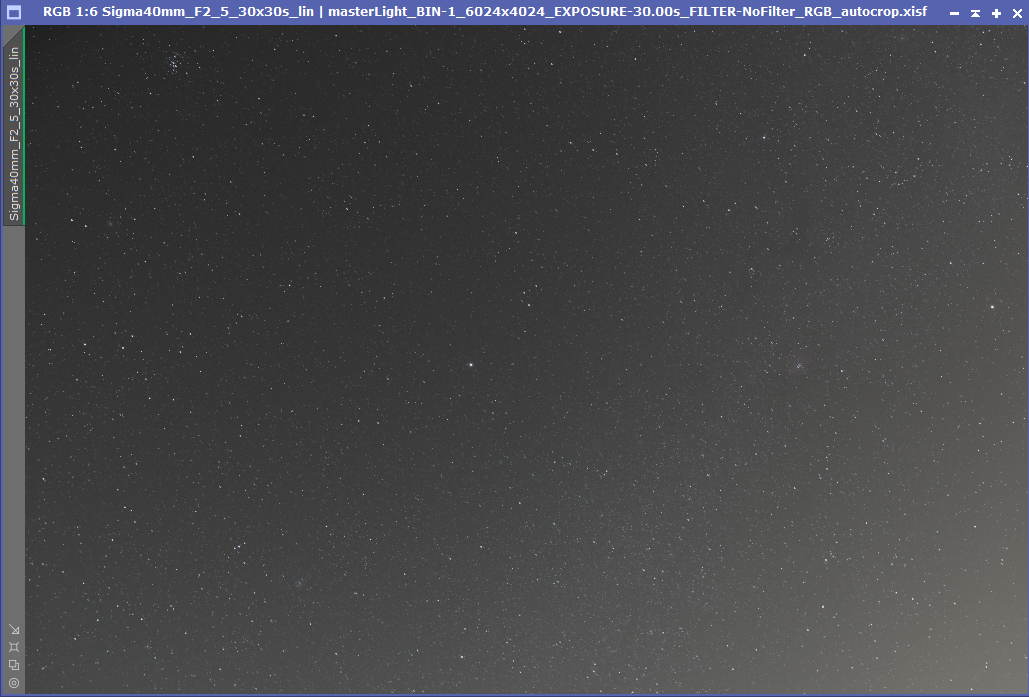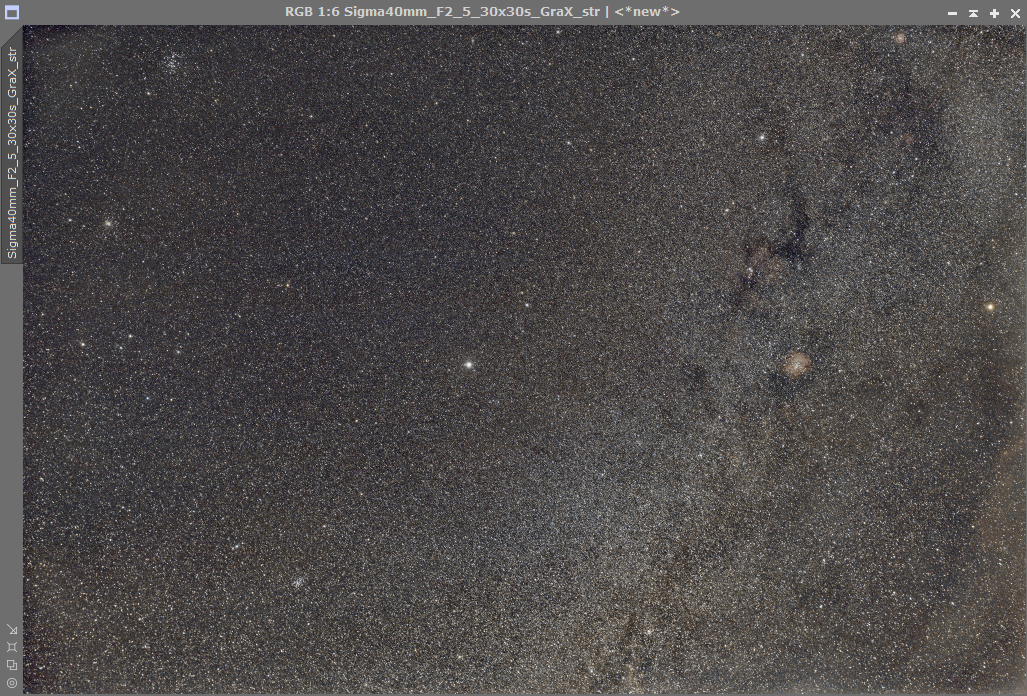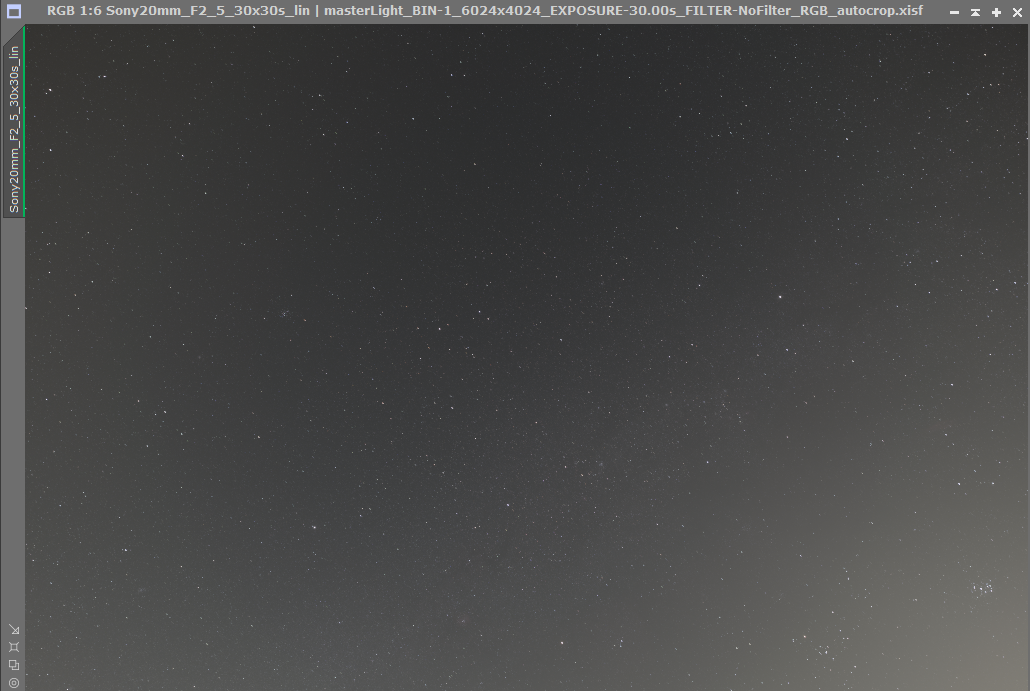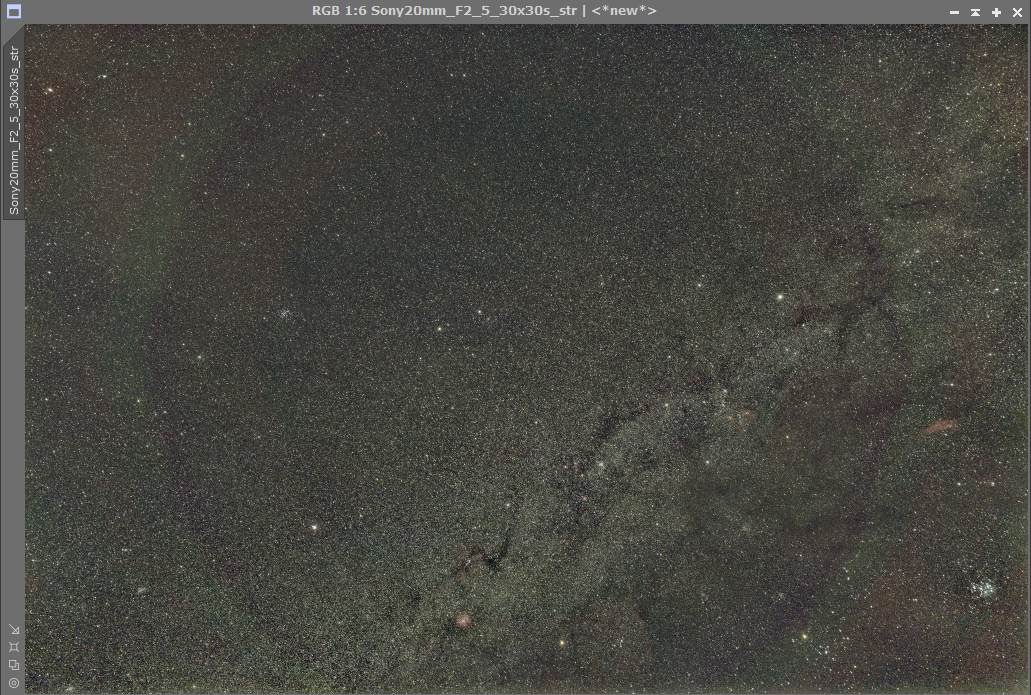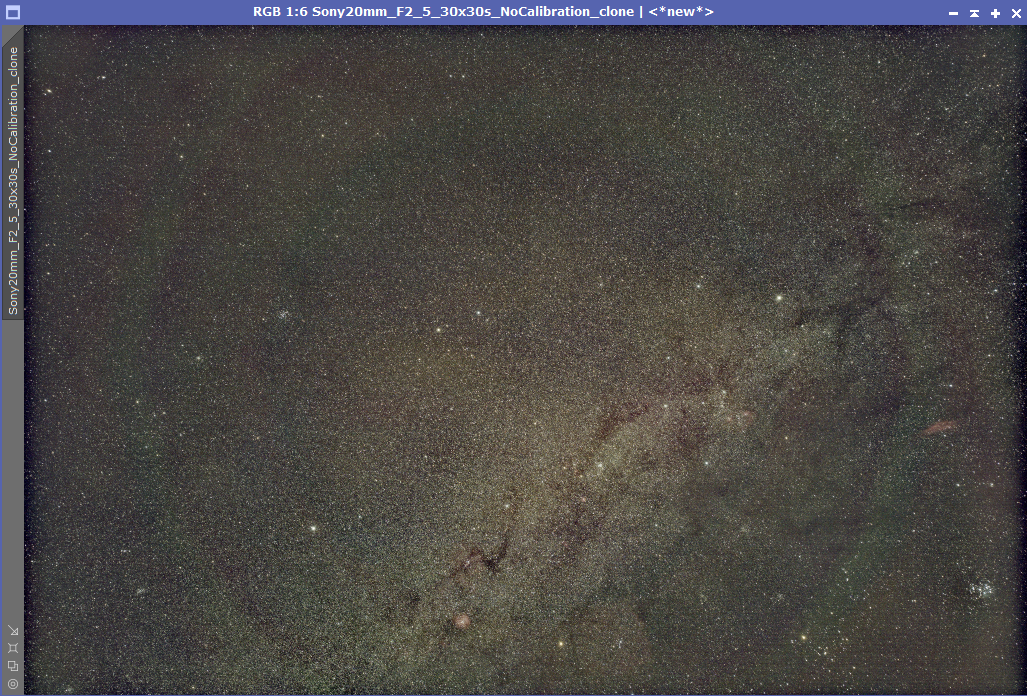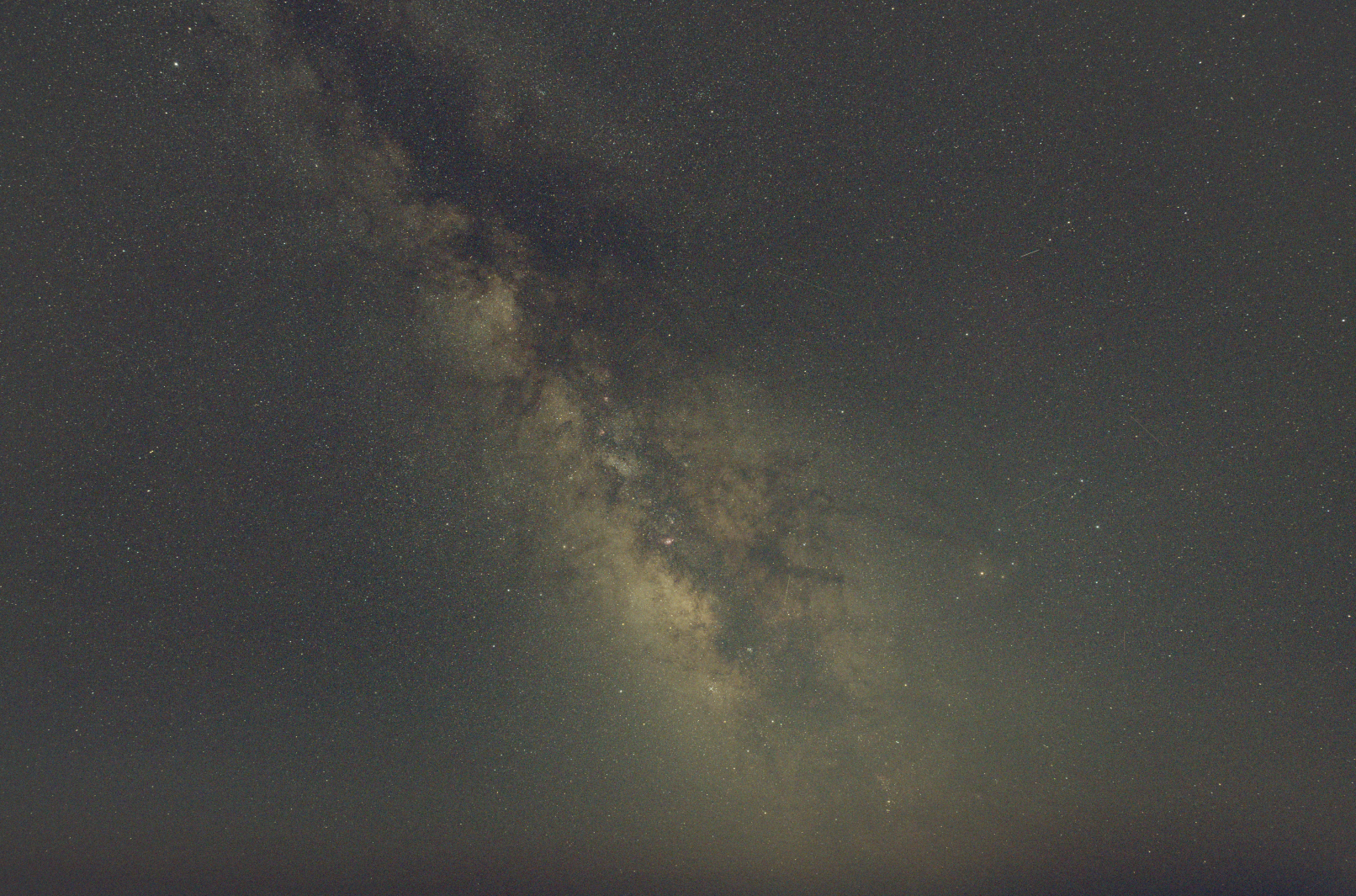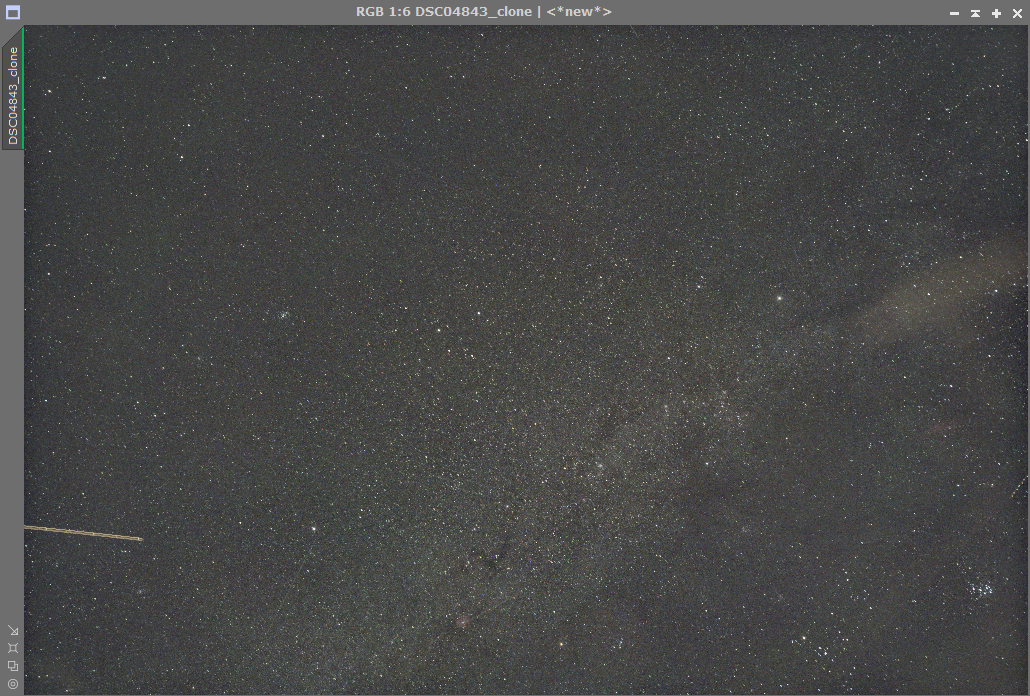Dear all,
I recently switched from Canon 6D astro-mod to Sony A7III (also astro-mod by irrecams.de). The main reason for the system change was the lenses. Sony FE 20 G is IMHO the best lens for the Milky Way. I made a few shots from a tripod and stacked them - the results are fantastic. A7III is significantly better in terms of noise than the old Canon. However, if I use a tracker and stack 20 - 30 shots, each 30 seconds, I get an ugly circular pattern, which cannot be corrected by bias/flats/darks. Not even GraXpert can correct it.
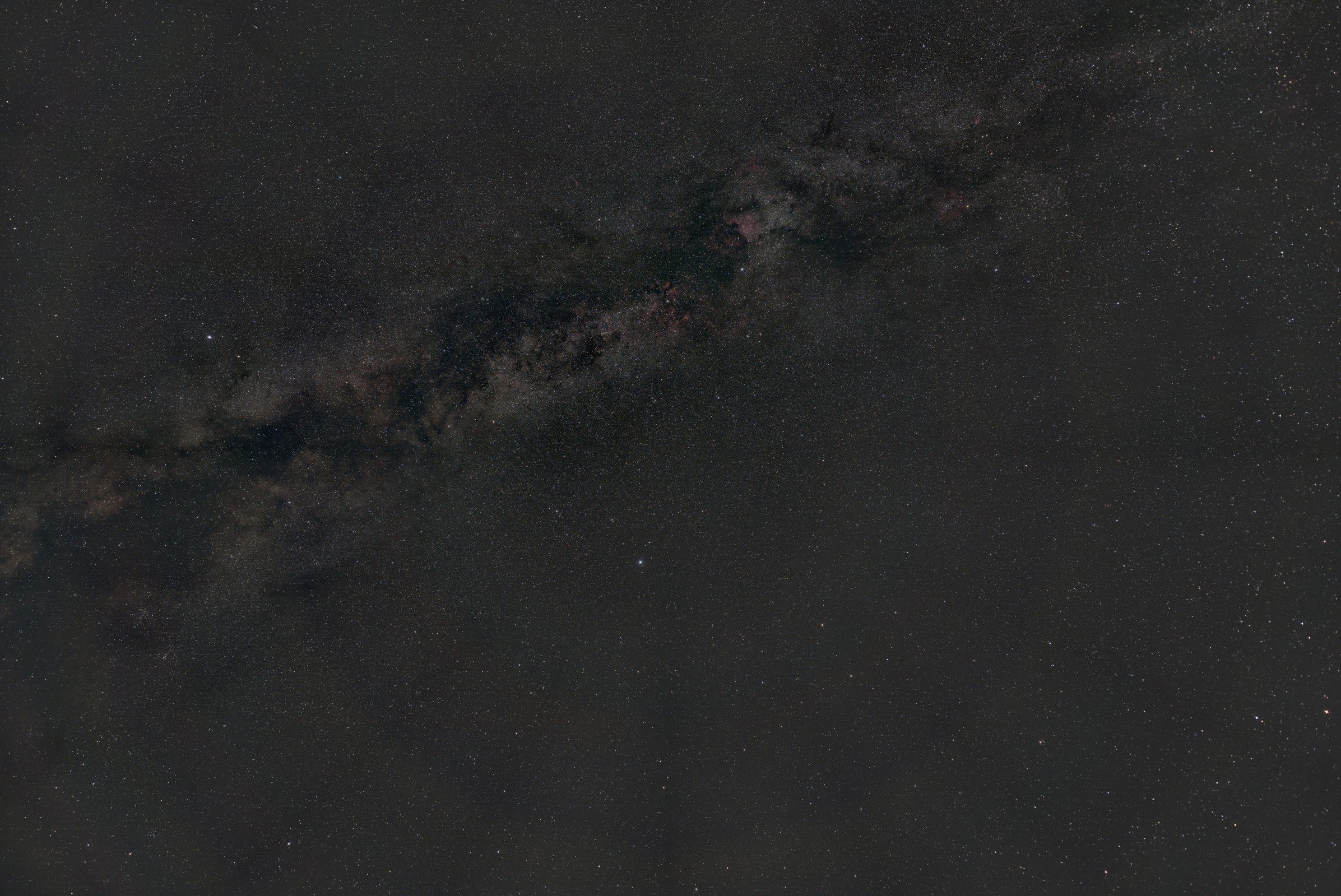
The issue is well described here https://www.markshelley.co.uk/Astronomy/sony_coloured_polygons.html
It seems to be related only to the lenses recognized by the A7III camera. Manual lenses work fine. But this completely ruins the purpose of a low-light camera combined with a fast, sharp Sony lens.
I tried lens corrections off, and on - both are the same.
I have the latest firmware 4.01 and most probably this is the final one because it hasn't been updated since 2021.
The big question is: has Sony A7IV the same issue, or has it been resolved? There is no point of buying a new camera if the stack of many pictures yields in uncorrectable image.
I recently switched from Canon 6D astro-mod to Sony A7III (also astro-mod by irrecams.de). The main reason for the system change was the lenses. Sony FE 20 G is IMHO the best lens for the Milky Way. I made a few shots from a tripod and stacked them - the results are fantastic. A7III is significantly better in terms of noise than the old Canon. However, if I use a tracker and stack 20 - 30 shots, each 30 seconds, I get an ugly circular pattern, which cannot be corrected by bias/flats/darks. Not even GraXpert can correct it.

The issue is well described here https://www.markshelley.co.uk/Astronomy/sony_coloured_polygons.html
It seems to be related only to the lenses recognized by the A7III camera. Manual lenses work fine. But this completely ruins the purpose of a low-light camera combined with a fast, sharp Sony lens.
I tried lens corrections off, and on - both are the same.
I have the latest firmware 4.01 and most probably this is the final one because it hasn't been updated since 2021.
The big question is: has Sony A7IV the same issue, or has it been resolved? There is no point of buying a new camera if the stack of many pictures yields in uncorrectable image.

